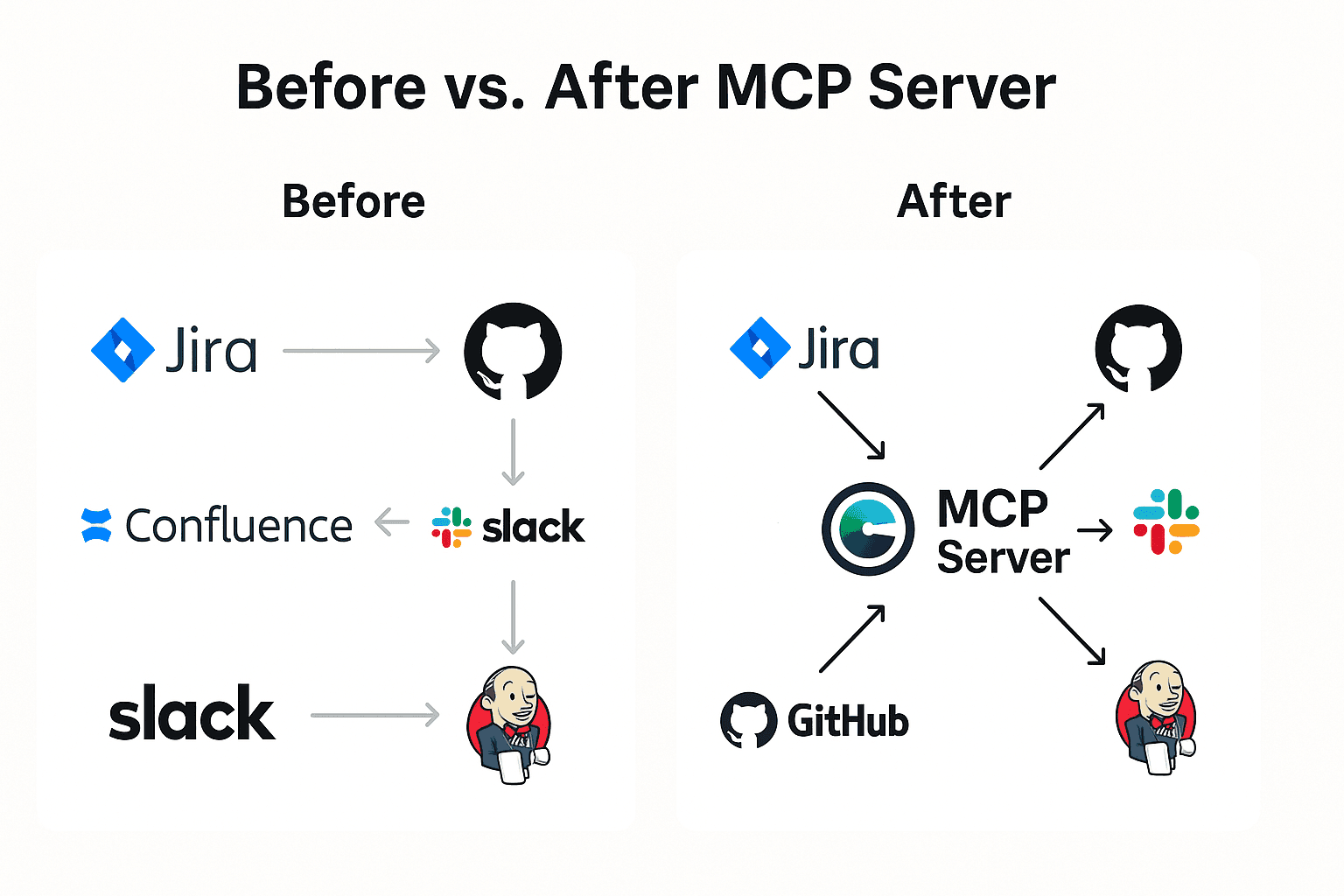- Published on
The Hidden Cost of Context Switching in Modern Software Teams
- Authors

- Name
- Nitin Wadhawan
This is the first post on Engineerloop.com — a blog exploring how AI, developer tools, and engineering culture are reshaping modern software teams.
It starts with a JIRA ticket.
You pick it up from the backlog, crack your knuckles, and dive in. But before you write a single line of code, you're already juggling five different tools just to get started.
- JIRA ticket? Open.
- GitHub repo? Loading.
- Confluence doc? Maybe helpful.
- Slack? Someone might've left a comment.
- Jenkins? You'll be back here—multiple times.
This is the modern developer experience.
The Dev Toolchain: Disconnected by Default
Most engineering orgs rely on best-in-class tools: JIRA, GitHub, Jenkins, Slack, Confluence—and maybe more.
But they don't speak to each other natively. So developers end up doing the orchestration manually—context switching their way through tabs, clicks, messages, pipelines, and reviews.
Let's walk through a common workflow:
- Pick up a JIRA ticket
- Read Confluence for background
- Search GitHub for related modules
- Write code
- Open a PR and assign reviewers
- Notify on Slack
- Write test cases and update the ticket
- Trigger Jenkins for a dev deployment
- Respond to QA feedback, redeploy
- Merge → Pre-prod → Prod via Jenkins
Each step works in isolation. Together? They kill flow.
The Real Problem: Glue Work Fatigue
What's really happening here is developer bandwidth is being drained by coordination:
- Every manual handoff interrupts focus
- Every Slack ping is a tab switch
- Every Jenkins job requires waiting
- Every PR review is a potential blocker
This is the hidden cost of modern engineering: High toolchain complexity + low workflow integration = massive context switching tax.
Enter the Model-Context-Protocol: Making Tools Work for You
To fix this, we don't need more tools—we need smarter workflows.
The Model-Context-Protocol (MCP) is an open standard for connecting AI assistants to tools and data sources. An MCP server acts as the orchestration layer between your tools. It connects GitHub to JIRA, Slack to Jenkins, Confluence to QA workflows—and automates the glue work so developers don't have to.
Think of an MCP server as a programmable backend that watches your toolchain and automates intent across them.
Before vs. After MCP Server (Powered by Cursor)
Below is a simplified snapshot of how things look before and after introducing an MCP server into your workflow. In this case, we use Cursor as the engine behind it:

Cursor: The Future, Already Here
Tools like Cursor bring the MCP vision to life—with AI.
With Cursor:
- You can open a JIRA ticket, and Cursor will read the context and generate a draft PR with suggested code changes, commit messages, and test scaffolding.
- While you're reviewing another PR, Cursor listens to feedback on a separate PR and may start implementing changes or at least prepping suggestions.
- It becomes your silent pair programmer and automation assistant—without ever needing a Slack ping.
Real-World Workflow: With Cursor + MCP
| Step | Old Way (Manual) | New Way (Automated via Cursor/MCP) |
|---|---|---|
| Understand ticket | Dev reads JIRA and searches manually | Cursor reads ticket and proposes code changes |
| Raise PR | Dev creates PR and adds reviewers | Cursor raises draft PR with context-aware reviewers |
| Review feedback | Dev reads comments and responds manually | Cursor starts implementing suggestions in parallel |
| QA trigger | Dev runs Jenkins or asks for deployment | MCP server auto-triggers dev deployment on PR status |
| Ticket updates | Developer updates JIRA manually | JIRA updated based on GitHub activity |
Final Thoughts
We've spent years optimizing builds, pipelines, and deployments. But we haven't optimized how work flows through a developer's day.
If your devs spend more time orchestrating tools than writing code, you're not just losing velocity—you're bleeding morale.
MCP servers and AI-native editors like Cursor are not just conveniences. They're step-changes in how software is built.
Coming Up on Engineerloop
This is just the beginning. I'll be writing about:
- How AI is reshaping system design and code review
- Real-world LLD + HLD breakdowns
- Tools transforming developer experience: DX.dev, Swarmia, Graphite, and more
Follow along. Let's eliminate glue work—one layer at a time.